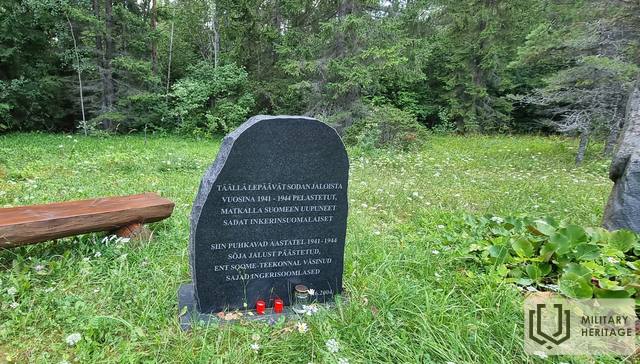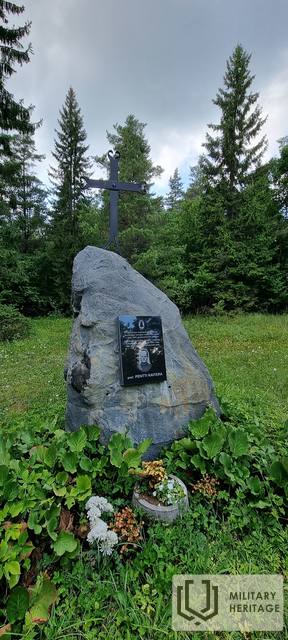Ingrų suomių memorialinė vieta Põllküla mieste
Memorialinė vieta


 42
42



Artėjant nuo Kersalu, prieš Põllküla geležinkelio pervažą, miško kelias pasuka į dešinę. Palei šį kelią, apie 200 m atstumu, miško proskynoje, yra memorialinė vieta.
1942–1944 m. iš Sovietų Sąjungos į Suomiją buvo evakuota daugiau nei 63 000 Ingrijos-Suomių karo pabėgėlių. Dauguma jų buvo laikinai apgyvendinti karantino ir pabėgėlių stovyklose, esančiose Põllküla, taip pat Kloogoje ir Paldiski. Evakuotieji į Suomiją buvo perkelti per Paldiski uostą.
Manoma, kad vien per Põllküla stovyklą praėjo kelios dešimtys tūkstančių žmonių. Žmonės stovykloje praleisdavo nuo kelių savaičių iki kelių mėnesių. Jie gyveno pastatuose, pastatytuose Raudonajai armijai 1939–1940 m. Gyvenimo sąlygos buvo sunkios, jie kentėjo nuo maisto trūkumo, šalčio, drėgmės ir įvairių infekcinių ligų. Dėl to stovykloje buvo didelis mirtingumas. Manoma, kad stovykloje žuvo apie tūkstantis ingrų suomių.
1944 m. rugsėjo 19 d. pasirašytos paliaubos, kuriomis baigėsi Tęstinio karo Suomijoje sutartis, įpareigojo Suomiją išduoti Sovietų Sąjungai Ingrijos suomius, kurie buvo Sovietų Sąjungos piliečiai. 1944–1945 m. į Sovietų Sąjungą buvo repatrijuota apie 56 000 žmonių.
Põllkülos memoriale yra atminimo lenta žuvusiems ir evakuacijai vadovavusiam Penčiui Kaiterai.
Panaudoti šaltiniai ir literatūra:
https://finlandabroad.fi/web/est/aktuaalne/-/asset_publisher/h5w4iTUJhNne/content/pollkulas-avati-ingerisoomlaste-paasteoperatsioonile-malestustahvel/384951
Susijusi laiko juosta
Susijusi istorija
Suomijos jėgerių vėliavos pašventinimas Liepojos Šventosios Trejybės katedroje
Pirmoji Nepriklausomos Suomijos vėliava buvo pašventinta 1918 m. Liepojoje, Šventosios Trejybės bažnyčioje, kur suomių jėgeriai prieš išvykdami namo prisiekė ištikimybę teisėtai Nepriklausomos Suomijos vyriausybei.







